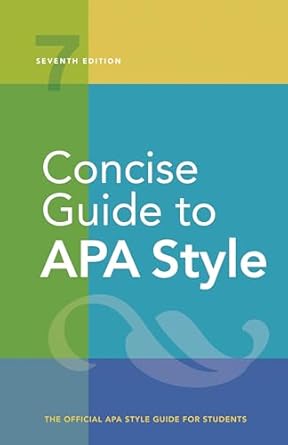[toc]
citation order mastering reference list organization
Concise Guide to APA Style: 7th Edition (OFFICIAL)
Page 264 Review
Decoding the Nuances of Academic Referencing: A Deep Dive into Citation Order
Academic writing, at its core, thrives on precision and clarity.
One crucial aspect of ensuring these qualities is the meticulous organization of references.
This excerpt from a style guide elucidates the intricate rules governing the arrangement of entries in a reference list, crucial for maintaining scholarly integrity.
Let’s dissect these rules to understand their underlying logic.
Prioritizing Single-Author Entries
The guide emphasizes a clear hierarchy when dealing with multiple publications by the same author. “One-author entries should precede multiple-author entries beginning with the same first author, even if the multiple-author work was published earlier.” This rule prioritizes individual contributions, acknowledging the solitary effort of a single author before acknowledging collaborative works.
For example, consider these entries:
“Davison, T.
E. (2019).
Davison, T.
E., & McCabe, M.
P. (2015).”
Even though the collaborative work by Davison and McCabe was published earlier (2015), the single-author work by Davison (2019) takes precedence in the reference list.
This convention simplifies the reader’s search, enabling them to quickly locate the individual contributions of a specific author.
Chronological Order for Identical Authors
When dealing with multiple works by the same set of authors in the same order, the rule becomes straightforward: “Multiple-author entries in which all authors appear in the same order should be arranged by the year of publication (the same as one-author entries).” This chronological ordering aligns with the historical progression of the author’s research and thinking.
“Costa, P.
T., Jr, & McCrae, R.
R. (2013).
Costa, P.
T., Jr, & McCrae, R.
R. (2014).”
The 2013 publication precedes the 2014 publication, reflecting the chronological order of the authors’ contributions to the field.
This organization provides a clear timeline of the authors’ work, assisting readers in understanding the development of their ideas.
Alphabetical Sorting of Subsequent Authors
The most nuanced rule addresses situations where the first author is the same, but the subsequent authors differ.
The guiding principle here is alphabetical order: “Multiple-author entries with the same first author and different subsequent authors should be arranged alphabetically by the surname of the second author or, if the second author is the same, the surname of the third author, and so forth.” This alphabetical sorting streamlines the process of locating specific collaborative works within a large reference list.
Consider these examples:
“Jacobson, T.
E., Duncan, B., & Young, S.
E. (2019).
Jacobson, T.
E., & Raymond, K.
M. (2017).”
Here, ‘Duncan’ precedes ‘Raymond’ alphabetically, even though the publication year of the latter is earlier.
Similarly:
“Pfeiffer, S.
J., Chu, W.-W., & Park, S.
H. (2018.”
Pfeiffer, S.
J., Chu, W.-W., & Wall, T.
L. (2018).”
The alphabetical ordering of ‘Park’ before ‘Wall’ dictates the arrangement, ensuring a logical and easily navigable reference list.
Addressing Ambiguity: Same Author and Date
A particularly intricate scenario arises when multiple works by the same author(s) are published in the same year.
The guide offers a precise solution to eliminate ambiguity: “Ambiguity can arise when multiple works cited in a paper have the same author and date (i.e., the same author[s] in the same order and the same year of publication) because the same in-text citation would then correspond to multiple reference list entries.
To differentiate references with the same author and year, put a lowercase letter after the year in both the in-text citation and the reference list entry.”
This involves assigning lowercase letters (‘a’, ‘b’, ‘c’, etc.) to differentiate the entries.
The guide further clarifies:
“The letter format for references with years is ‘2020a,’ ‘2020b.’
The letter format for references with no date is ‘n.d.-a,’ ‘n.d.-b.’
The letter format for in-press references is in ‘in press-a,’ ‘in press-b.’”
The assignment of these letters follows a specific process. “First, compare the dates.
References with only a year precede those with more specific dates, and specific dates are placed in chronological order.”
Example:
“Azikiwe, H., & Bello, A. (2020a).
Azikiwe, H., & Bello, A. (2020b, March 26).
Azikiwe, H., & Bello, A. (2020c, April 2).”
The (2020a) entry, representing the work with only the year, precedes the entries with specific dates in March and April.
This meticulous approach ensures that each citation is uniquely identifiable and corresponds to a specific entry in the reference list.
Conclusion
These rules, though seemingly complex, are designed to create a standardized and easily navigable system for academic referencing.
By adhering to these guidelines, researchers can ensure the clarity, accuracy, and integrity of their work, fostering effective communication and collaboration within the scholarly community.
Mastering these nuances is essential for any aspiring academic writer.
Buy full ebook for only $18: https://www.lulu.com/shop/american-psychological-association/concise-guide-to-apa-style-7th-edition-official/ebook/product-rmzpq54.html?page=1&pageSize=4
Citation Order Mastering Reference List Organization
Read more: Statistical Abbreviations: A Quick Reference Guide


Leave a Reply